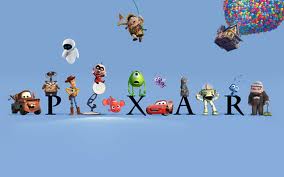Please forgive the irregularities of this posting but the gods have conspired against it being so. First there was a technical bug that eviscerated my post last week, when I hit save on the blog (That’s the last time I compose on-line). Then my wetware operating system picked up a virus (flu) that severely slowed my processing abilities, in addition to diminishing any desire to share my thoughts with anyone, other than a pharmacist. Finally to add insult to injury, I am now on interminable hold waiting for the Apple tech support folks to explain why the recent iCloud OS update has been crashing my system. (“Oh Steven, why hast thou forsaken us? Be not far from me, for trouble is near and there is none to help.” Adapted from Psalm 22.) I do hope Steven Jobs left detailed instructions on what to do while he's gone.
Jobs was right, "1984 wasn't like 1984"... But 2004 would make Orwell look naive and optimistic about the tools Big Brother would have at his disposal.
As I mentioned in my previous post, the introduction of the Macintosh, created a divide in the burgeoning PC world. There were those who saw the personal computer as an adjunct to their accounting calculators and the nascent $100,000 “Word Processor Systems”, a recent corporate development that was allowing secretaries enough free time to demonstrate they could do more than type. In short they saw the PC as a device to continue doing business the same way, just more efficiently. Then there were those who saw the emerging technology as the potential to do something very “cool”. They weren’t exactly sure what the Macintosh could do well, but more importantly, they didn’t know what it couldn’t do either. They just knew it had a terrific graphic interface and that it allowed unimagined visual creativity. These were generally younger idealistic people who still believed we were all going to vacation on the moon and have spiffy “Jetson” jet mobiles to get around (I still want one.) Mostly the same folks who went on to overuse the phrase “Think outside the box”, mostly because the people in charge, wouldn’t let them play inside the box. This made the Mac an instant must have in the graphic arts community.
Anyone remember, "ABORT, RETRY, FAIL?" Still makes me nervous.
Windows had red, blue and 14 other colors, who could ask for anything more?
Both Jobs and Bill Gates had drunk from the Xeorx GUI cup in Palo Alto. They shared the idea that computers could do more than crank out payroll, billing and inter-departmental memos. Now that Gates and Allen (the other MS guy) had sold the default operating system to 90% of the existing PCs, Microsoft was ready to step out (largely due to a poorly written work-for-hire IBM contract) and eat their patron’s PC software business for lunch. Soon Big Blue was merely a hardware vendor in the PC race but they had big momentum. Remember the phrase, “Nobody ever got fired for buying an IBM.”? I do and I did, buy one that is.
George Jetson never had one these - It was so cool

She sure wasn't at IBM
When I informed the IBM tech support guy that my sound-card wasn't working, he asked what program I was running. I told him, and heard a distinct snort on the other end. He then slowly and with great disdain informed me that, “That is a child’s program. Why would you put a child’s game on a $5,000 IBM ThinkPad?” Just as I knew that the VP of Advertising at Armstrong didn’t get the “1984” commercial, I knew at that moment, that IBM didn’t get the Personal Computer. Both were doomed.
Steve talked this fellow out of selling "Sugar Water"(Pepsi), John Sculley, who came on as CEO and then fired him.
(Note to self, braces with blue jeans - bad career move.)
While we are on the topic of kids programs and doomed, both were large in Steve Jobs’ mind. Apple was getting its head handed to them by Microsoft. MS had first rolled-up IBM’s PC software business with the launch of MS Office. They were now hard on the heels of Apple’s niche graphic and music markets. As Apple’s sales and profits dwindled, the board of directors felt that the company needed less “vision” and more "supervision", of the adult variety. The board bounced Jobs as chairman and gave him a desk in the back of the warehouse.
It was a long dry trek
Jobs walked to the back and wandered out the back door into the valley (Silicon). There is a long and honored tradition of prophets wandering out alone into the wilderness. Most tribes and shareholders get annoyed when a visionary comes along and condemns the status quo, just ask Jesus or Socrates. (Let’s not forget, if King George could have gotten his hands on our boy Ben, he’d have stretched his neck in a New York second.) Apple was happy to see Steven go for the door to pursue his quest of making 0’s and 1’s amaze, delight and change the world.
Next - was next but took 10 years to be next.
Jobs envisioned an operating system that would effortlessly incorporate sight, sound and inter-connectivity, rather than jamming them on top of a creaky legacy OS, as after-thoughts. Jobs bottled lighting once, he could do it again.
Jobs wanted his Next computer to do what he was doing with "Toy Story" at home - Now that's vision
To be continued...




In regards to Mr. Jobs I would have enjoyed spending 10 minutes with him in order to get my own feel of the man instead of relying on what others have said and reported.
ReplyDelete